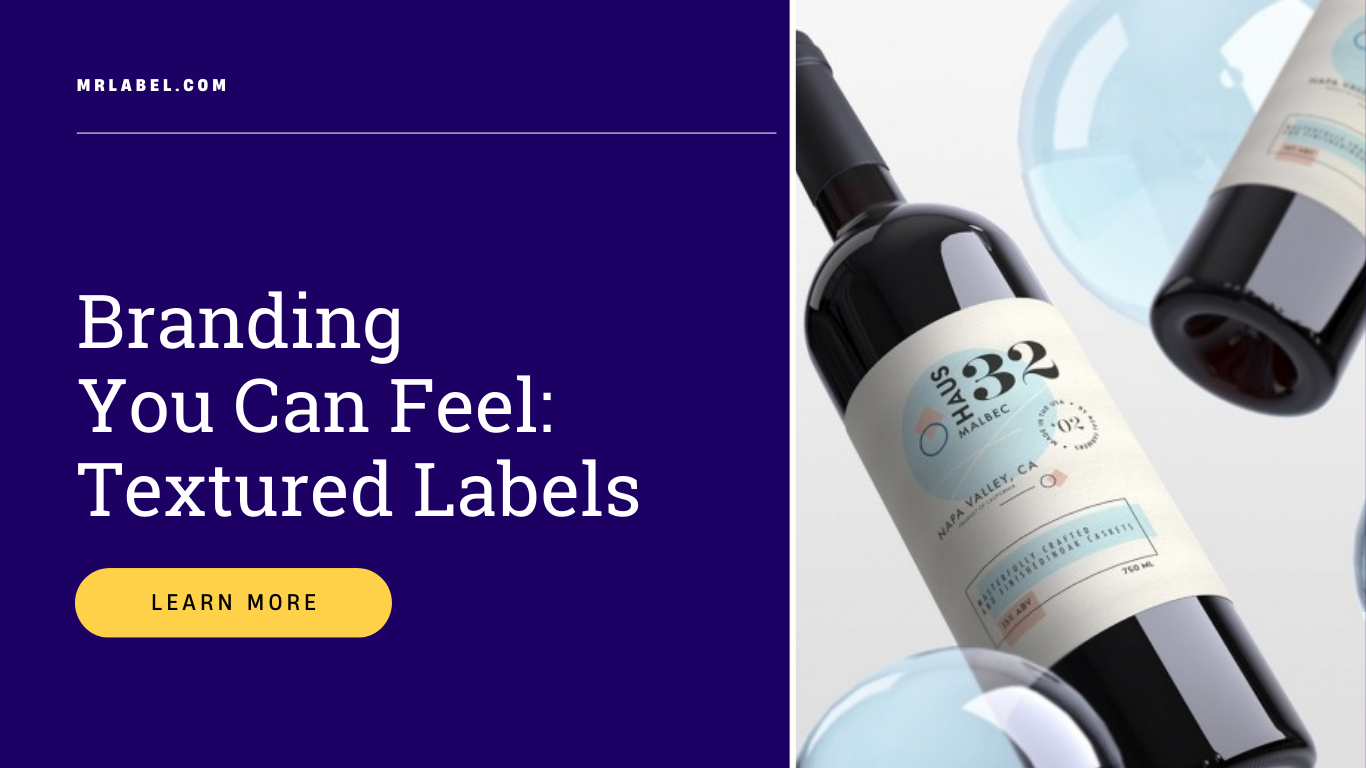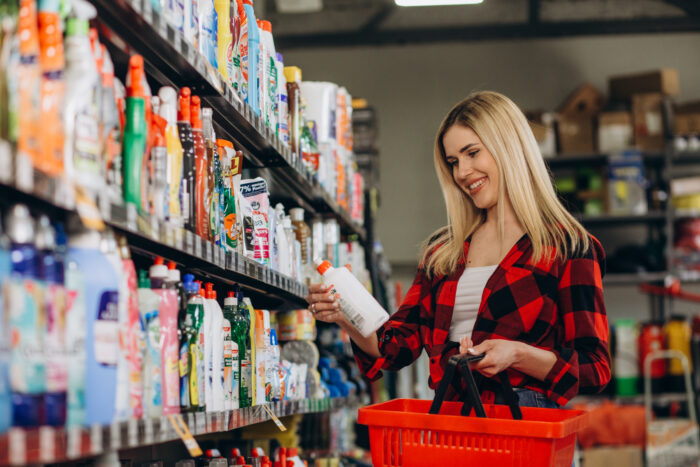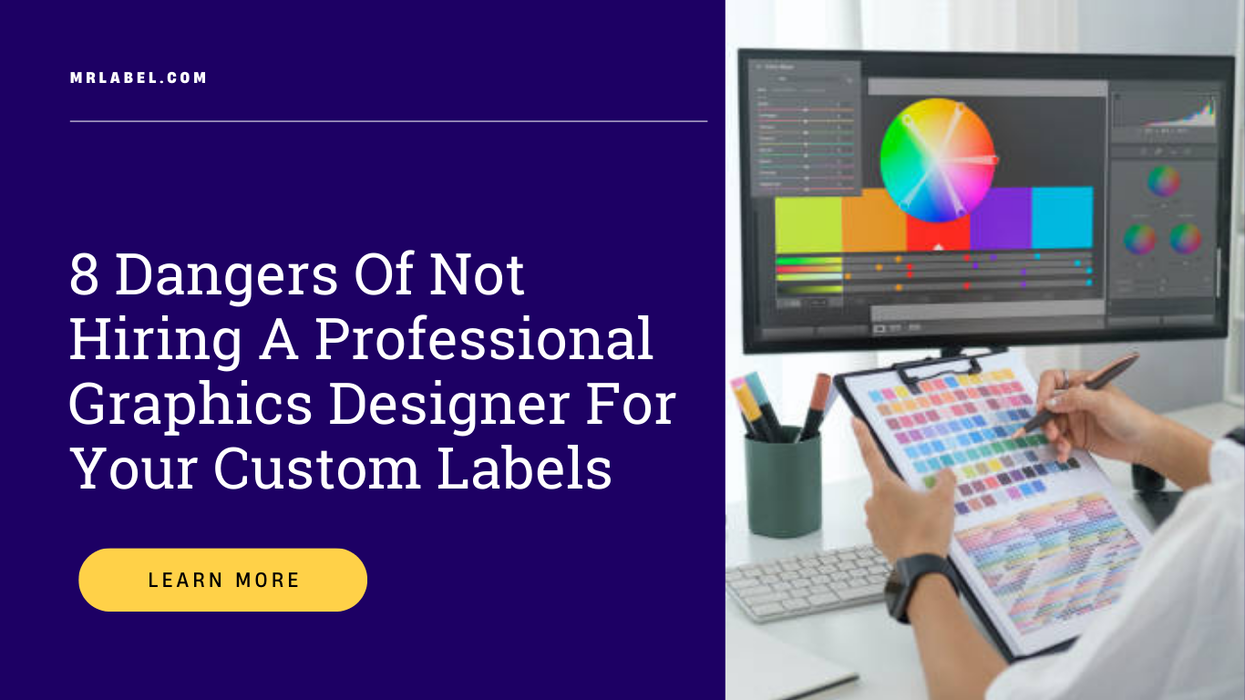Brands are more than just products today, they are experiences. Globally, businesses are in the race to offer the best and most exclusive experiences to their audiences. And the touchpoint starts when the customer interacts with your product.
A custom textured label is your brand’s first shot at making a unique impression! A professional tactile label can improve the look and feel of your products, taking your brand to great heights. But how do you achieve the perfect tactile label? Our expert label designers reveal their top tips to achieve the perfect custom textured label.
What Are Textured Labels?
Textured labels refer to labels or stickers that have a distinct physical texture on their surface. This texture can vary in feel and appearance, and adds an extra dimension to the label beyond just visual design. Textured labels can be used for various purposes, such as enhancing the tactile experience of a product, conveying a premium or high-quality feel, or providing additional information through touch.
Textured labels are not limited to varnish and finishes. Today they encompass a range of experiences through technology such as UV coating, glitter coating, sandpaper finish, soft touch coating, pearlescent coating, foiling, and embossing.
Embossing 101
Embossed labels are a common variety of textured labels, and you are more likely to have come across one. “Embossed” is a specific type of texture commonly used in labeling and printing. When something is embossed, a design or pattern that’s raised above the materials’ surface.
Embossing adds depth, elegance, and sophistication to labels, business cards, packaging, and other printed materials. It makes the design more visually appealing, helping special information stand out. The opposite of embossing is “debossing,” where the design is pressed into the material, creating a sunken or recessed effect.
The Benefits of Textured Labeling
The touch and feel of a product is as important to consumers as the look and the product itself. When standing in-store, shoppers interact with the packaging and the labels, and the tactile experience at that moment of truth can sway their purchase decisions. In today’s world, where brands fight for sales and recall, your product’s textured label can make all the difference to the actual purchase.
A custom textured label can lend you multiple benefits:
- More inclusive, catering to visually impaired people, and diversifying your target audience.
- Offer greater functionality and uniqueness to your product marketing.
- Sophisticated and feel ‘expensive’, giving a premium feel to your product.
- Textured labels tell a story, transforming your brand into an experience for customers.
Tactile labels can make your brand reach great heights, but only if they’re done right. What parts should be textured and which parts should be plain? It’s all about finding the right balance to look superior without being tacky or overdoing it.
These labels require specialized tools and machinery that only an experienced professional label printer will be able to provide! Here are some tips to ensure the best results…
Common Applications for Textured Labels
- Pharmaceutical products
- Wine and beer bottles
- High-end technology products
- Subscription boxes
- Journals and stationery items
- Business cards and other promotional materials
Top Tips for Successfully Implementing Professional Textured Labels
A few quick steps to implementing tactile labels for your brand…
1. Decide on Textured or Embossed Elements
Identify key elements on the label that would benefit from a textured or embossed effect. It could include logos, brand names, product names, or specific design elements that are central to your product’s identity. Even a QR code can be textured if you’re utilizing it on your packaging.
2. Collaborate with a Professional Designer
It may be the most crucial step in creating your perfect custom textured labels. Find a skilled designer experienced in tactile design and label printing. At M&R Label, we offer an array of textured labels that can be designed specifically for your brand. Our designers will discuss your brand identity, product characteristics, and desired aesthetic to finalize a visually appealing label design that incorporates tactile elements seamlessly.
3. Striking the Right Balance
When creating a custom label design, work closely with the designer to ensure that the textured or embossed elements enhance the label’s appeal without overwhelming the overall design. It’s critical to balance the tactile experience and maintain a refined, high-quality appearance.
4. Readable Text
Ensure that any text on the label, whether raised or not, remains clear, legible, and easy to read. The tactile elements should help the readability of essential information.
5. Material Selection
Choose label materials that are compatible with embossing and texturing processes. Your label designer can help you choose the material best suited to your needs.
6. Test Prototypes
Create prototypes or samples of the labels with the chosen textures or embossing before doing a full rollout. You can even test them on your target audience to gauge their response and ensure the tactile features are delivering the desired impact.
7. Printer Collaboration
Collaborate with a printer experienced in producing textured or embossed labels. Share your design specifications and requirements to ensure the printing process aligns with your vision. It’s best to opt for a full-service label provider that offers both design and printing capabilities.
8. Quality Control
Regularly review and approve proofs during the printing process to maintain quality control. It will ensure that the tactile elements are meeting your expectations and that the final product aligns with your brand’s image.
9. Consistency Across Packaging
If your product packaging involves multiple elements (e.g., box, insert, label), make sure the tactile design is consistent across all elements to create a seamless and impactful experience.
10. Market Testing
Before a full rollout, consider a smaller market release to gather feedback. This feedback can help you make any necessary adjustments before a wider launch, and cut back on any financial losses.
11. Educate Consumers
If the tactile elements hold special meaning or communicate specific information, guide their significance. It can enhance consumers’ appreciation and understanding of your product.
If that feels like a lot to consider, that’s because it is! But you’ve come to the right place. That’s why we always recommend businesses trust their labeling needs to the experts.
Partner with M&R Label for Premium Textured Labels
Creating a textured label is a collaborative effort. At M&R Label, our team has extensive experience creating custom tactile label designs for businesses in every industry – across the United States.
Are you looking for an unforgettable label solution? As your premium, full-service label provider, customer satisfaction is our #1 priority! It’s our goal to deliver the best experience and product possible so our customers can grow their brands successfully. We promise high quality materials, excellent attention to detail, and fast turnaround.




